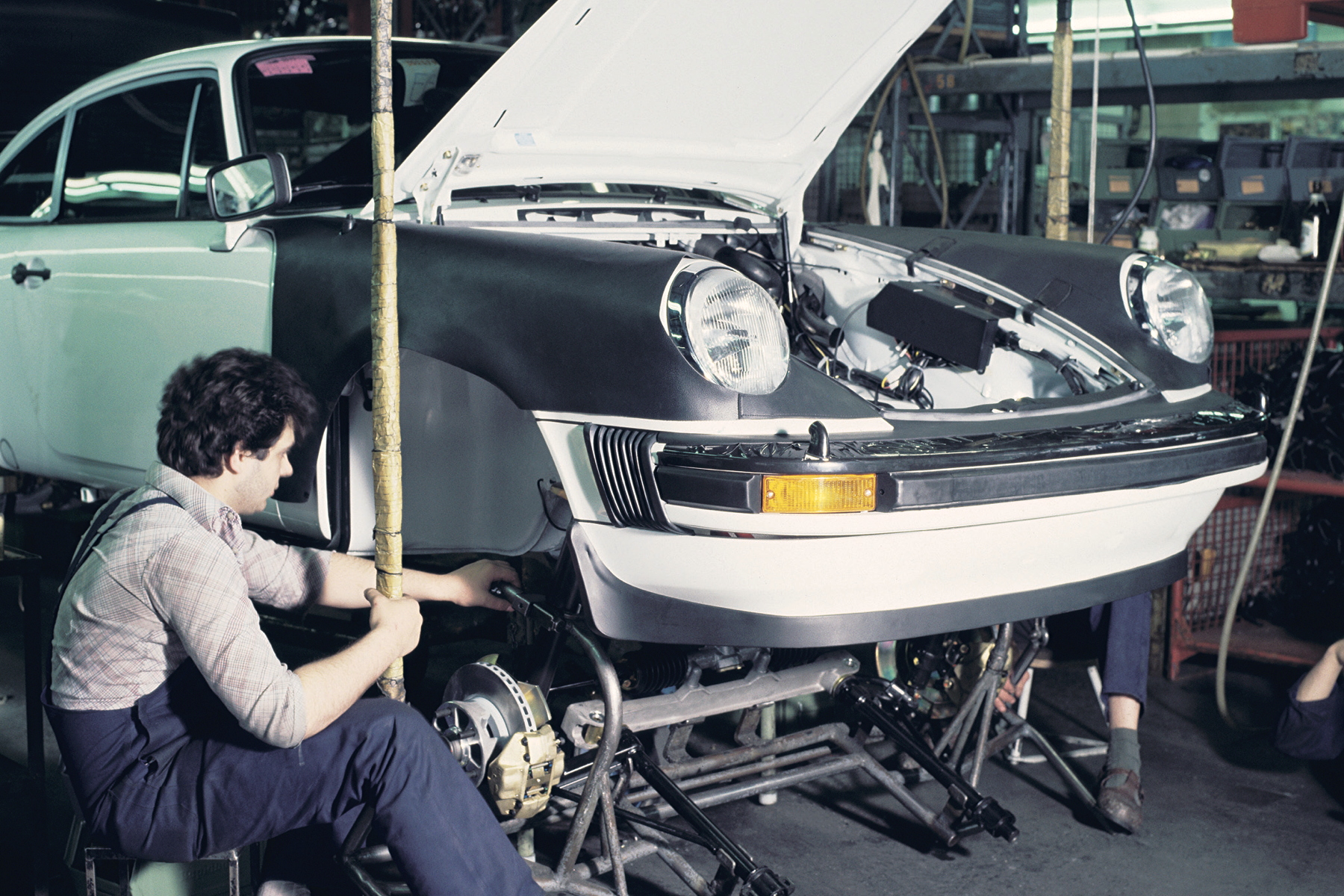Suspension: A Porsche 911 history
Replacing the 356, the original Porsche 911’s suspension setup was much more modern than its predecessor. Up front, the 901 utilised a Boge-built MacPherson strut, lower wishbone and 19mm-diameter longitudinal torsion bar, mounted off the back of wishbone’s rear leg.
At the rear, a semi-trailing arm setup was brought in. The inner arm mounted just off the nose of the gearbox, while the outer, pivoting arm connected to the chassis, twisting a 23mm lateral torsion bar on either side.
While the front was given a 13mm anti-roll bar, the rear would not gain such roll control until the introduction of the Porsche 911S in 1966 (a car that also offered adjustable Koni hydraulic dampers).
As part of the 1969 B-Series, the 911’s rear trailing arms were lengthened by 61mm, yielding a near-identical increase in the sports car’s wheelbase (helping to reduce the rearward weight bias). However, this was the most major 911 suspension change until the arrival of the 964 in 1989.

The original torsion bar design didn’t leave enough space for the front driveshafts in the 964 C4. Zuffenhausen therefore made the move to coilover MacPherson struts, while the front wheels could move fore and aft slightly, lessening bump steer and steering wheel feedback.
At the rear, the damper strut also featured a coil over spring however, the biggest change was made to the design of the trailing arm assembly that now featured an additional, pivoting link in place of the inner arm.
Combined with a radially elasticated bush in the outer mounting, the ‘Weissach effect’ (pioneered on the 928) helped to reverse the semi-trailing arms naturally tendency to toe out under lateral loads, a trait that created the early car’s fearsome reputation for lift-off oversteer.
The Porsche 993 made use of a similar effect, albeit it via a vastly different construction. The semi-trailing arm design that had evolved from the original 901 finally made its departure while the MacPherson struts remained up front (now lighter thanks to greater use of aluminium).

This general layout has survived through the 996 generation right through to the latest Porsche 991, with Zuffenhausen’s engineers focussing predominantly on electronic controls during the water-cooled era.
In 2004, with the launch of the 997, Porsche unveiled the Porsche Active Suspension Management (PASM) variable rate dampers before developing Porsche Dynamic Chassis Control (PDCC), a system to preload the anti-roll bars, for the launch of the 991 generation.
The latest suspension development has been the advent of rear-wheel steering, initially launched on the 991 Turbo, GT3 and GT3 RS models. At speeds under 31mph, the system helps to increase agility while over 50mph the electronically actuated rear toe links help to improve stability.
Such has been the success of rear-axle steering, it has now been offered as an option on Carrera S, Carrera 4S and Targa 4S versions of the latest Porsche 991.2 while PASM is now a standard feature on the new generation of Neunelfer.


Comments (0)